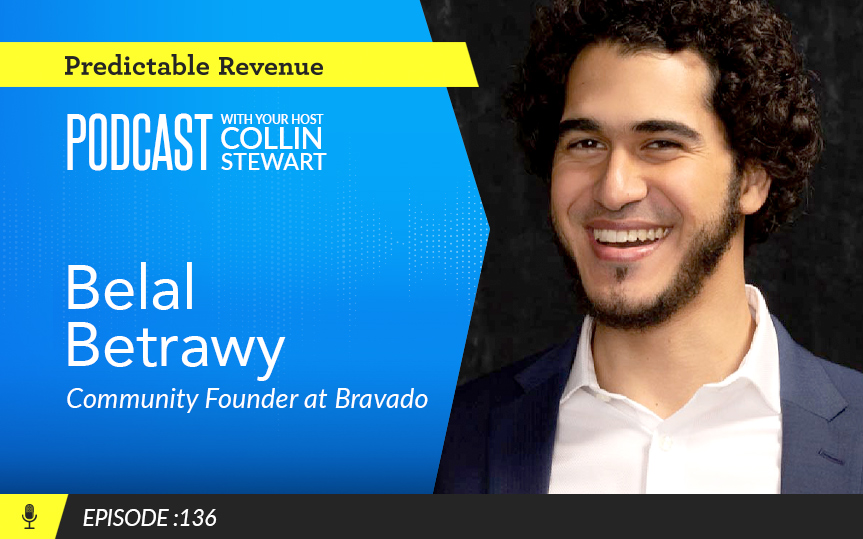Measuring Performance the Right Way and Working Smart to Peak Productivity

No sales team, or no sales process, is perfect. Even the most successful ones – there’s always something to fix, refine, or scrap altogether.
The good news, of course, is the sales world is a supportive one, with no shortage of well-known writers, thinkers, and leaders sharing their knowledge of a whole range of topics (full disclosure: we hope The Predictable Revenue Podcast is one such source of help).
This flood of content is particularly helpful because sales teams – too often, unfortunately – suffer from the same problems, says Belal Batrawy, notes sales leader and writer, on a recent edition of The Predictable Revenue Podcast.
“I’ve been posting my thoughts now for about 6 months. I knew I had a good story, but I hadn’t told it well, so I started writing,” says Batrawy.
To be honest, I’ve been surprised to see the response. Inside sellers for SaaS have been responding particularly well. I’ve been in SaaS selling for 10 years, so, I guess, I know a thing or two. Don’t ask me about the stock market, or the newest video game, I can’t help you. But, I can help with selling.
It doesn’t matter in what industry you toil, or where your company is located, sales problems traverse them all.
What to track
So…what should we track?
According to Batrawy, fixing sales mistakes starts with tracking the right metrics:
- Instead of activity, think about email and call sentiment
- Leads that reflect your ICP (prospects that might actually close)
- Pipeline velocity – understanding your average deal size, average deal cycle, and tweaking as necessary depending on who you sell to. Would expect the seller to know this.
- Disqualification – let’s face it, the majority of leads don’t close. So, the best sellers are the ones who lose the least. So, close when you need to close. Disqualify when you need to, and don’t waste your time, so cut your losses early. Do an incredible job disqualifying.
“Pipeline generated by prospects from your ideal customer profile – this is a nice thing to track. Stuff is going in the pipeline, but what goes in the pipeline is who we want to be selling to,” says Batrawy.
Sales competitions are another thing to think about – they often revolve around volume and that doesn’t make sense. The parameters of the competition don’t make sense. It forces that same silly activity thing. Keep that in mind.
A culture of presentee-ism?
This is a fascinating concept, adds Batrawy.
The idea of “presentee-ism” actually comes from the Center for Disease Control, and refers to the workplace (certain workplaces) expectation that employees come into the office, come hell or high water.
Of course, there are exceptions to the rule, but, needless to say, many salespeople feel the pressure to come in and perform even if they are feeling under the weather. What this promotes though, is an unhealthy work-life balance, and, worse yet, can spread germs and sickness.
“The CDC talks about this during flu season. If you’re sick, you shouldn’t come to work. But, people feel pressure, they come in, and get everyone else sick.They cough on their hand, touch a door handle, and now everyone has the flu,” says Batrawy.
I’ve been involved in it, I think we’ve all seen it. How do we prevent it? It has to come from management. If it is taken seriously, then it can really help. But, if management has their head on wrong, it can really hurt SDRs, because what are they gonna do?
For more on Batrawy’s thoughts on how to fix those persistent sales problems, check out the rest of his interview on The Predictable Revenue Podcast.
NO TIME TO READ?
Listen On:


